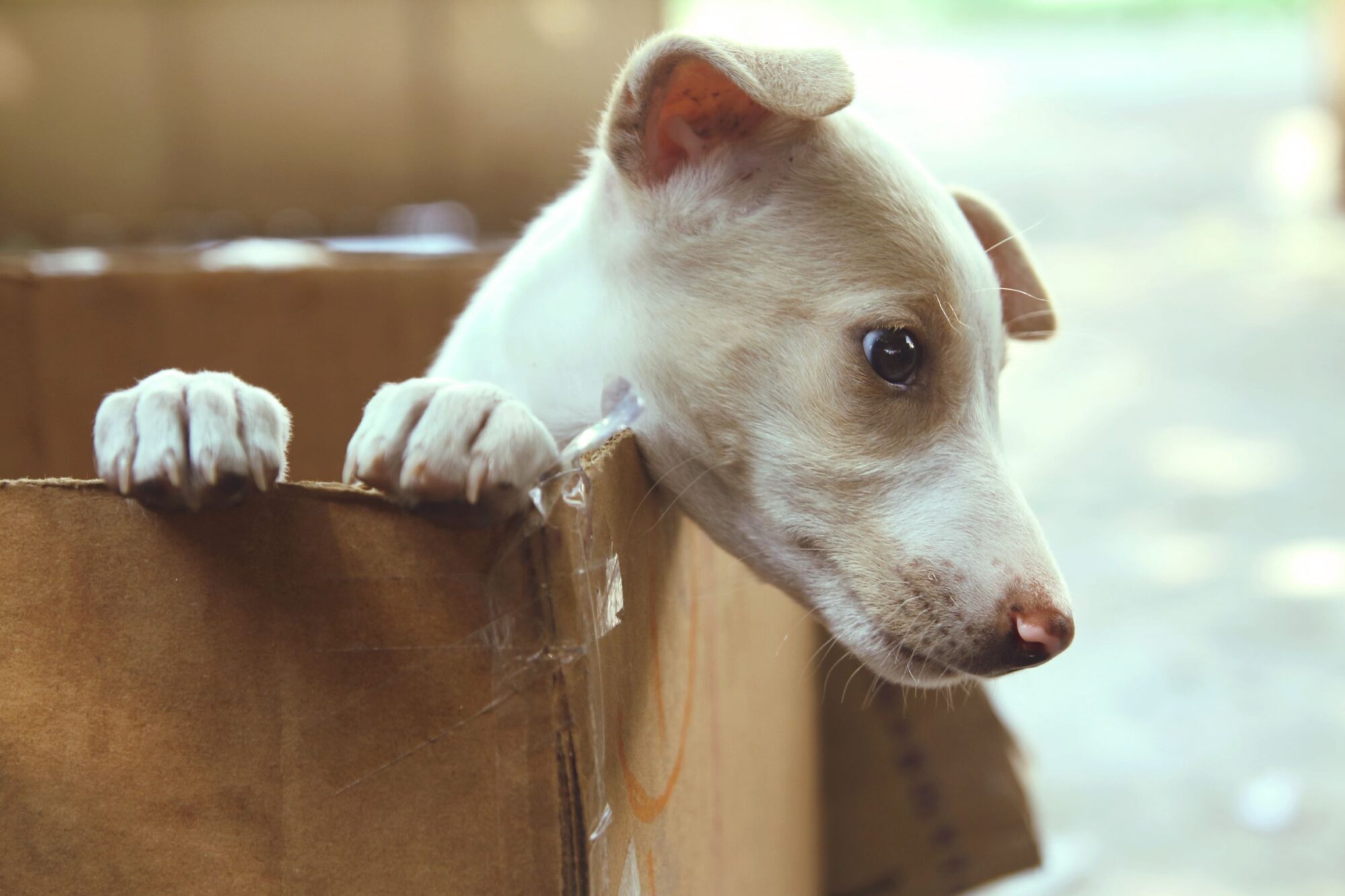How to Help Your Pet Adjust to a New Home

Moving to a new home is an exciting time, but for our pets, suddenly landing in an unfamiliar space can lead to pet anxiety. So while you’re packing up boxes and making plans for moving day, keep these pet relocation tips from our team in mind.
Packing Tips for the Big Day
Cats (in particular) are wary of new objects, and dogs might also become anxious at the sight of mountains of boxes. If possible, store boxes you’ve already packed in a spare room or the garage, so they are less disruptive to your pet’s movements and routine. Speaking of routine …
Stick to Your Pet’s Usual Routine
Stick to your pet’s feeding, walking, and playtime schedule as much as possible, even when you’re knee deep in shipping cartons. And when you arrive in your new home, maintaining your pet’s usual routine is more important than ever to mitigate pet anxiety.
Pack Your Pet’s Essentials Last—And Unbox Them First
When moving with pets, keep them secluded in a quiet room with comfort items like a favorite bed or blanket, plus food and water dishes. This will aid in stress reduction and keep your pet from escaping when the movers go in and out. Pack up your pet and her essentials last, and when you arrive at your new home, unbox her bed, favorite toys, and food and water dishes right away. It’s OK to set her up in a quiet, temporary space at first and arrange the final placement of her feeding station and bed later.
New Home Introduction
Training techniques for introducing pets to a new home include:
- Familiarization is key. Show her around the inside and outside of the home, using treats and praise to reinforce desirable pet behavior.
- Watch for signs that your pet might want to “mark” her territory, and gently distract her.
- Because animals are sensitive to odors, consider installing pheromone diffusers in the home to aid stress reduction and help your pet adjust more quickly.
- Stay home as much as possible for the first few days in the new home.
- Pet relocation can be stressful for parents, too, but your pet can sense your mood, so keep calm even when everything around you seems chaotic.
- Consider closing off rooms that aren’t yet set up. Keeping your pet confined to the areas that already feel like home can help reduce pet anxiety.
Keep Your Pet Active
Active pets are happy pets, so keep environmental enrichment in mind throughout your pet’s familiarization process. Interactive feeders and food puzzles provide both physical and mental stimulation, and make time to walk your dog and enjoy constructive playtime with your cat.
Stay Patient
The hustle and bustle of moving to a new home can be stressful for our pets. If an “accident” happens, clean it up calmly and understand that your pet is doing the best she can. If undesirable pet behavior continues, schedule a checkup. We can provide more training techniques to help your pet enjoy her new home as much as you do!


